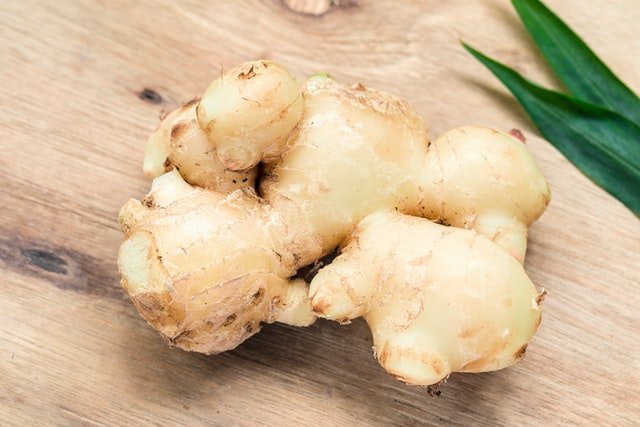
Ginger essential oil : properties, uses and useful indications to make the most of the benefits of this essential oil.
The essential oil of ginger is seen as an excellent natural remedy for cellulite. It has excellent cosmetic properties and is suitable for both external and internal use. In this page we will see what are the properties of this oil, we will see how to prepare it and its most practical uses.
The chemical composition of the essential oil of ginger sees an abundance of sesquiterpenoids, first of all, the zingiberene from which it takes its name ( Zingiber officinalis or ginger) and in smaller quantities of β-sesquiphellandrene, bisabolen, and farnesene.
The pungent taste of ginger is dictated by non-volatile compounds such as phenylpropanoids, especially gingerol.
The properties of ginger essential oil
A clinical study conducted showed that ginger is more effective than ibuprofen (active ingredient of drugs such as Momentm, Ketodol, Brufen….) In the treatment of osteoarthritis.
It is classified as a stimulant and carminative. Used as a natural remedy for dyspepsia, constipation, colic … Studies on the effects of ginger on gastric load are conflicting and inconclusive, in fact, among the side effects of the internal use of ginger essential oil there is nausea, heartburn , intestinal swelling. The use of ginger orally is not recommended.
Ginger essential oil for massage
For massages, simply dilute a few drops of ginger essential oil in almond oil. Useful in massages to relieve muscle pain, indigestion, weakness and circulation problems.
Thanks to its draining and stimulating properties on microcirculation, it is suitable for anti-cellulite massages. It is defined as an excellent remedy for cellulite because it exerts a rubefacient action, that is, it draws the blood into the most superficial layers of the tissues.
Thanks to its soothing properties it can be used to relieve back pain, headache, neck pain and aches due to strains or trauma.
The use of almond oil is always recommended, especially for anti-cellulite massages: almond oil acts as a carrier and helps ginger to penetrate into the deeper skin layers.
Ginger essential oil, other uses It can be used in the foot bath to solve the problem of cold feet. It is able to give heat to the body after intense exposure to cold.
In aromatherapy it is used to make the environment warm: in the home it can be used to aromatize the bedroom, ginger is considered a strong male aphrodisiac.
Ginger would be able to carry out an antiviral action: its antibiotic properties make it a good natural remedy in case of infection with viruses, microbes and bacteria (fever, cold, cough …). Rather than employing ginger essential oil for internal use, we recommend taking the fresh or dried root.
How to make ginger essential oil at home
If you have a small ginger crop and intend to self-produce its essential oil, you can give it a try but not without difficulty.
The essential oil of ginger is extracted from the hulled and dried rhizome using the steam distillation technique. After having “dug” and collected the “roots” of ginger, you will have to dry them well and only then try to produce it. The ginger is a perennial herbaceous plant and presents a rhizome (root) fleshy and densely branched. The rhizome must be harvested after flowering, when the aerial part turns yellow, just like with potatoes.
Ginger oil, price and where to buy it
Where to find ginger essential oil? In stores specializing in aromatherapy, in herbalists or by purchasing it directly online, where you usually pay less.






